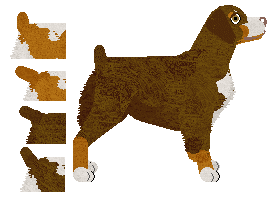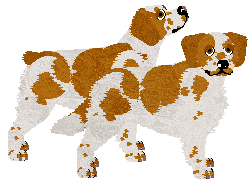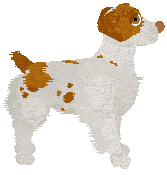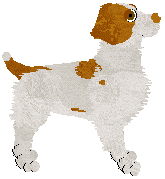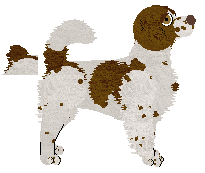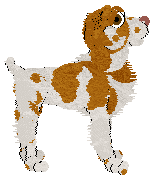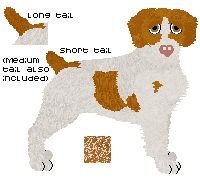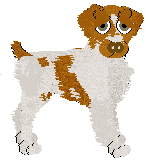Solid:




Tan:

 with
with 

 markings in the traditional or creeping pattern.
markings in the traditional or creeping pattern.White Markings: All dogz must have
 on at least the feet/lower legs and as a large chest patch. Higher degrees of irish spotting, blanket, piebald and extreme spotting is allowed. A blaze is desirable in all colours. The white is preferred to not touch the eyes in pose. 50 % or more white touching the eyes is faulted in proportion to the amount of white. 100 % white around the eyes is a DQ.
on at least the feet/lower legs and as a large chest patch. Higher degrees of irish spotting, blanket, piebald and extreme spotting is allowed. A blaze is desirable in all colours. The white is preferred to not touch the eyes in pose. 50 % or more white touching the eyes is faulted in proportion to the amount of white. 100 % white around the eyes is a DQ.Ticking/Roaning: Allowed in all colours.
American
Solid:



Tan: Allowed but not preferred.
 with
with 

 markings in the traditional or creeping pattern.
markings in the traditional or creeping pattern.White Markings: All dogz must have
 on at least the feet/lower legs and as a large chest patch. Higher degrees of irish spotting, blanket, piebald and extreme spotting is allowed. A blaze is desirable in all colours. The white is preferred to not touch the eyes in pose. 50 % or more white touching the eyes is faulted in proportion to the amount of white. 100 % white around the eyes is a DQ.
on at least the feet/lower legs and as a large chest patch. Higher degrees of irish spotting, blanket, piebald and extreme spotting is allowed. A blaze is desirable in all colours. The white is preferred to not touch the eyes in pose. 50 % or more white touching the eyes is faulted in proportion to the amount of white. 100 % white around the eyes is a DQ.Ticking/Roaning: Allowed in all colours.
 in black-nosed dogz,
in black-nosed dogz, 
 in others.
in others. in black dogz,
in black dogz,  in liver dogz.
in liver dogz.  or
or 